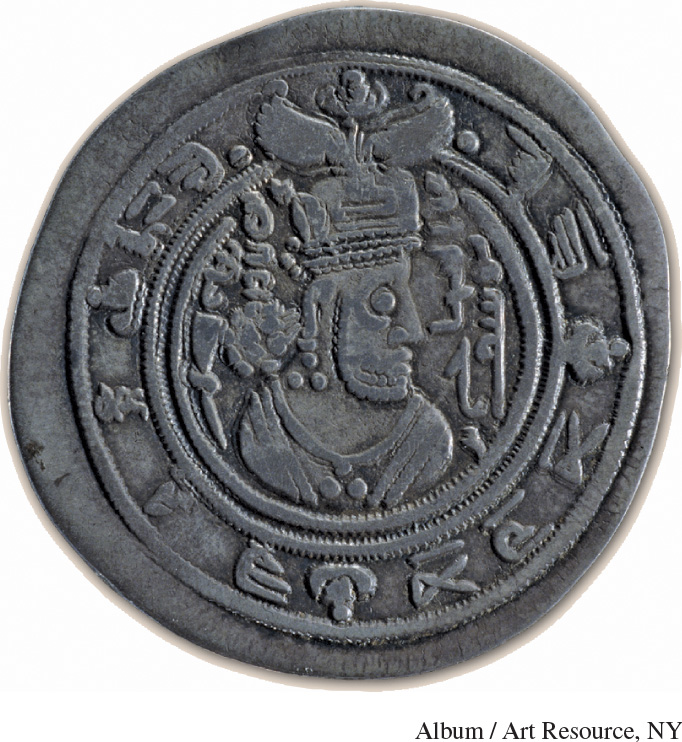Seeing History: Who Conquered Whom? A Persian and an Arabic Coin Compared


Do you see any differences between the two coins shown here? One is Persian; the other is Arabic and comes from a later period. Both were minted for use in Iran and Iraq, but at different times, when these lands were under different rule. The coin on the top is Persian and shows the image of a Sasanid King of Kings. In the margin are three crescents, each encompassing stars. It was minted under Chosroes II (r. 591–628), the ambitious conqueror of Jerusalem. The coin on the bottom was minted by an Umayyad provincial governor in 696/697, after Islamic armies had conquered Persia. True, one branch of Islam barred depicting the human form, but the early Ummayads were less condemning and saw nothing wrong with imitating traditional numismatic models. Although the image on the Arabic coin is still of a Sasanid ruler, the governor had his own name added in Arabic—it’s in the right half of the central roundel, perpendicular to the nose. He also added in the margin of the coin an Arabic inscription that mentions Allah several times.
Consider these coins in conjunction with supplemental evidence. The Arabic word for this type of coin, dirham, comes from the Greek drachma, a monetary unit used under the Byzantines. In areas that had been under Byzantine rule, the early Umayyad rulers adopted Byzantine coin forms, reusing their images—just as here they used the face of a Sasanid ruler. In general, the Umayyad fiscal system, which preserved the Byzantine land taxes, was administered by Syrians, who had often served Byzantine rulers in the same capacity. What advantages did the Arabs derive from adopting these institutions? From this evidence, how might you argue that both Greek and Persian institutions captured the conquering Arabs?
Question to Consider
What do the images and history of these two coins suggest about how much the Islamic world borrowed from the Persian Empire that it conquered?